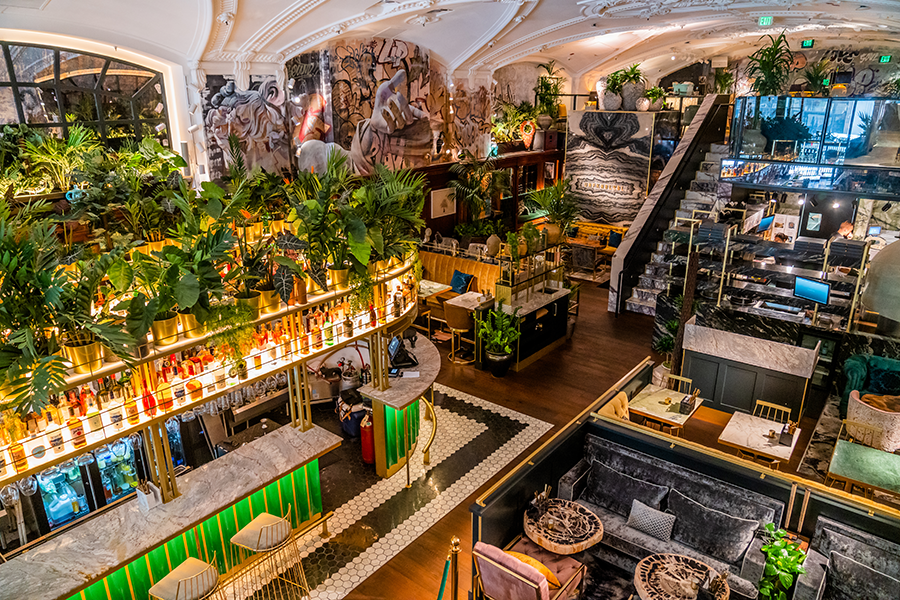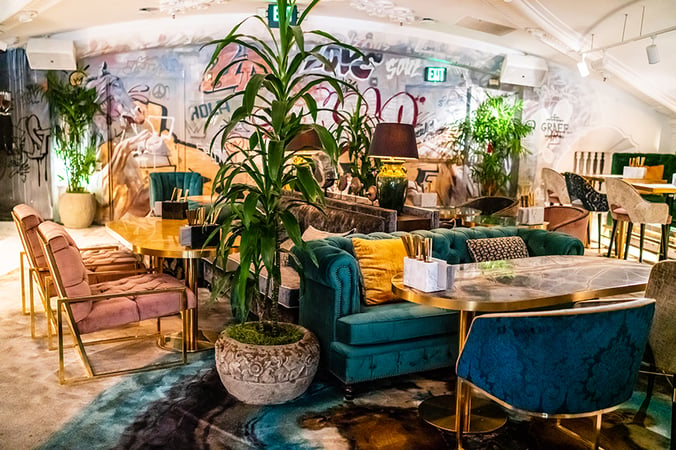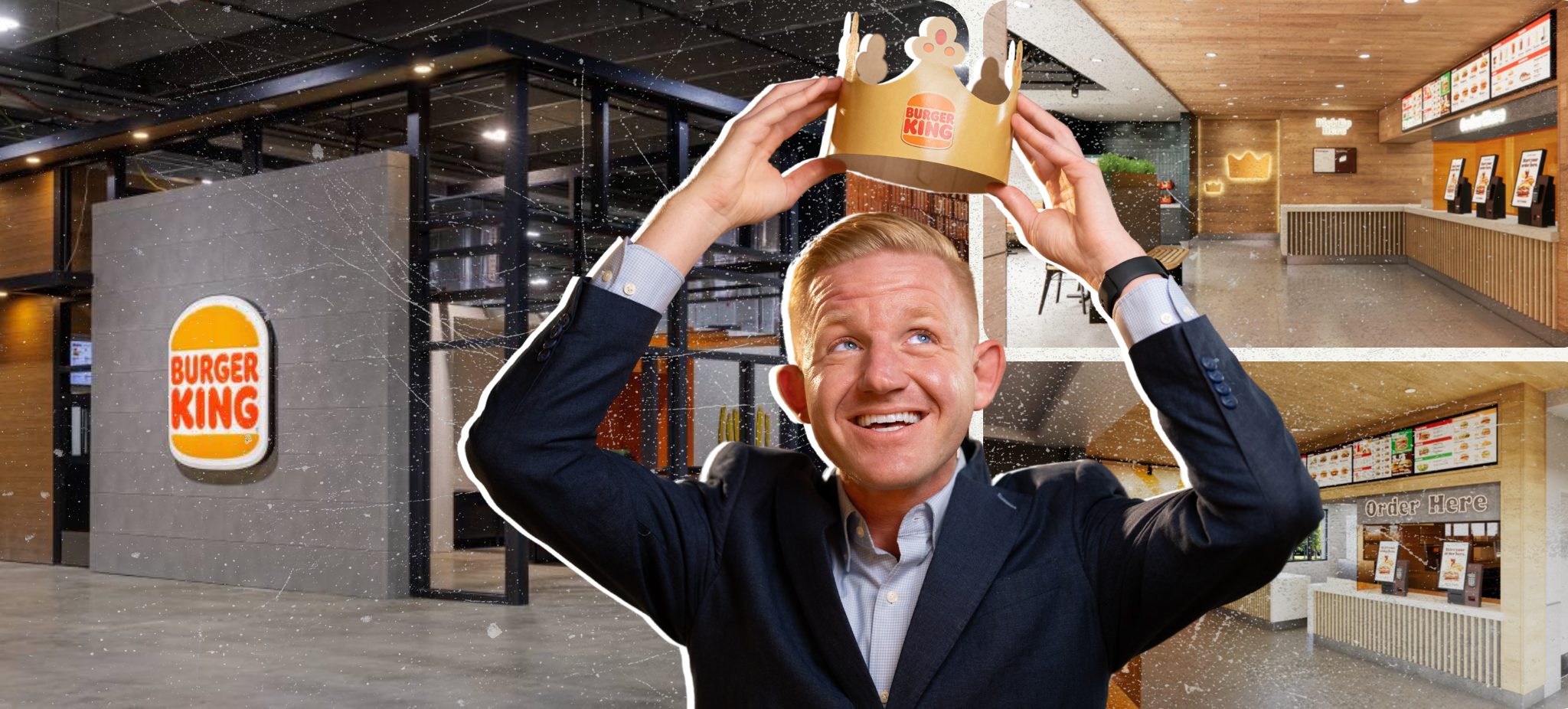Mobile ordering, ghost kitchens, third-party delivery, voice assistants, social media, AI, personalization... As the restaurant industry stands on the dawn of a new decade, never before has there been so many factors influencing consumer behavior.
But so far, being able to transform alongside today's customer has proven a difficult task for much of the industry. While some chains are embracing change and actively guiding its progress, others remain rigid and resistant amid the turbulence. For these players, a reckoning could be on its way.
“It's basically a new decade and it's still mind-numbing how lame the digital presence of most restaurants is today,” Brian Solis said. “Even just trying to look at a menu [online] is incredibly difficult.”
"It's still mind-numbing how lame the digital presence of most restaurants is today."
The futurist and best-selling author’s view may be a difficult one for the nation’s restaurateurs to swallow. The widespread lag to adapt to what’s happening outside of the physical restaurant, he said, is something every chain should be scrutinizing.
“We're essentially witnessing an Uber-like moment unfolding right now,” Brian Solis said. “What happened to the taxi industry will also impact the restaurant industry.”
If the last three years alone are anything to go by, the next decade will be a big one for the restaurant biz. Arguably, right now every chain is being forced to redefine themselves to remain relevant. Meeting the demands of a new breed of customer, Solis said, will require companies “to think creatively, beyond merely having the space to grow.”
“What we're still dealing with is an outdated conversation around physicality — the idea that because I exist, therefore I can attract the local market and that should be good enough. But it’s not. The same thing is happening in retail. You have executives who didn’t take the time to figure out how to compete against Amazon. And Amazon is over 20 years old. That ship has sailed.”
Reimagining the Physical
That’s not to say the physical location won’t play an integral role. New tech-heavy concepts provide a glimpse at how restaurants are tipped to evolve.
V DTLA, the fine-casual concept that opened in Downtown Los Angeles earlier this year is one such example. With help from the grand, sweeping ceiling of what used to be a jewelry store, the restaurant’s lavish interiors adeptly disguise the fact a gourmet pizza can be bought here for $16. As well as a cocktail bar, a ton of dramatic art on the walls, and high-end fixtures, it’s under the concept’s hood where V gets really interesting. Somewhat of an evolution of Swedish pizza concept, 1889, the ambiance at V is automatically adjusted throughout the day thanks to AI-optimized song selection and volume levels. It's even capable of pumping certain scents into the space to influence buying behavior. However, the additional tech that's been crammed into V signals an interesting milestone.
“V in LA is the first in the world to have a location tracking system with an accuracy of one inch,” Benjamin Calleja said.
CEO of Livit (the design and consultancy firm behind the restaurant), Calleja explained the technology allows a prospective customer to order ahead online before leaving the office, walk to V, take a seat wherever they like, and expect their food to arrive within minutes… all without having to talk to someone.

V DTLA, situated in an old jewelry store
Despite the buzz V DTLA has attracted (an Instagram follower every second over the first five days it was open, not to mention snapping up Eater’s award for Best Restaurant Design of the Year), it’s not this location Calleja is most excited about. Instead, it’s at the sister restaurant in Malmö, Sweden, where the locals’ response to V has been even more enthusiastic.
It’s here, in this city of 340,000, not LA, which Calleja believes offers up a blueprint for how the chain restaurant industry is about to change.
“There are only 20 cities in the world like LA with 20 million people,” Calleja said. “But there are thousands and thousands of cities like Malmo, where there's an old TGI Friday, there are some local players, and the QSRs are there, but there's nothing close to a lifestyle brand like V. So you can literally come in and own the market in a way that nobody has ever ventured to do.”
In an age when customer loyalty can no longer be bought with the mere backing of a brand name, Calleja believes that if chains wish to survive they’ll need to seriously enhance their offerings. And while this tidal wave of churning customer expectations is yet to really impact US casual dining chains in particular, Calleja thinks it’s imminent. Unless they start providing much more compelling reasons for customers to come through the door, they may not resurface.
"Consumers want aspirational brands they tie into and the world is full of grey, boring brands."
“Consumers are tired of average. There are so many average brands. All these casual dining giants, they're just average. There's nothing special in their experience or their menus. There's no edge to it. Consumers are looking for places where there's an emotional connection. They want aspirational brands they can tie into, and the world is full of grey, boring brands.”
Also suffocating hopes for survival, Calleja went on to describe in his blunt criticism, is the industry’s prevailing and often limited view of what it means to provide value to customers.
“Value doesn't have to mean discounting product,” he said. “Today, value is about how extraordinary an experience you can offer for a certain price. It’s kind of a redefinition of what value is for consumers.”

V DTLA
Rethinking the Footprint
Though if the words and actions of one of the most talked-about fast casual chain are anything to go by, the industry will have to redefine much more than the idea of value.
During a fireside chat at RestaurantSpaces ‘19, sweetgreen Co-founder, Nathaniel Ru, made an interesting statement restaurant companies should pay close attention to:
“When we think of the future, sweetgreen will be a food brand, and how you can experience it will be in so many different ways. It doesn’t have to be a restaurant, it doesn’t have to be a delivery person at your doorstep, it can be something else.”
This vision for the future, while intriguing, could signal the beginning of the end for a paradigm that foodservice has stuck with for too long.
“The restaurant business isn’t just about putting butts in seats,” Solis said. “It's about putting food in bellies.”
“Casual dining is in the crosshairs because it just has less and less relevance.”
But for a vast amount of the industry, a butts-in-seats-approach to sales has been the name of the game for some time. Amid this pursuit of greater store numbers, throughput, and profits, Solis said the in-restaurant experience has devolved to being merely functional and transactional in nature. Unless brands make the effort to migrate away from this mindset, sprawling portfolios already suffering from falling foot traffic could quickly develop into an unfathomable liability. Failing to immediately implement fresh, necessary change could easily bring about customer apathy, creating a network of bottom line black holes.
All of this might sound extreme, but it’s a scenario even seasoned industry veterans are thinking about. On the Restaurant Business podcast, A Deeper Dive, in September, Denny Post spoke frankly about her fears for the sector she’d recently left.
“Overall, the pressure on dine-in is especially high,” the former President and CEO of Red Robin said. “Casual dining, in particular, is in the crosshairs because it just has less and less relevance to the coming generation.”
One example of how companies are falling short of new customer expectations can be seen in the way they continue to struggle with the rise in online ordering. Until there’s a shift in the way that a company sees itself in the digital age, Solis said, problems will persist.
“Delivery and order ahead add new dimensions to the restaurant experience. Food is just one part of it. The delivery itself is another, so is the bag that the food comes in, the containers, napkins, utensils. All of these things now become extensions of that experience and those extensions become the brand itself.”
“The more preference you create” by responding to and providing customer demands “the more you’ll be able to thwart disruption.”
The Delicate Balance of Modernizing a Legacy Chain
Recognizing the need to adapt, 103-year-old restaurant chain, Nathan’s Famous, is a company making moves to create greater preference among its customer base.
The chain last year unveiled a redesign of its stores, has jumped into delivery and will soon introduce digital kiosks.
“There’s going to be a lot more ways to access the industry and I think that's good,” SVP of Restaurants, James Walker, said. “If the consumer says they want products brought to them, we're going to find a way to do that. I don't see that going away — the consumer’s demand for convenience is not going to change.”
With this demand in mind, Nathan’s will also open more drive-thru locations in the new year, adding to the fistful it has already. However, Walker said while there are thousands of viable sites across the country they could capitalize on with the initiative, the company is opting against rolling out as many as possible.
“This is not about how quickly we can grow, or how big we can grow. This is about a sustainable financial trajectory, not an accelerated trajectory,” Walker said. “We're focused on the next restaurant we're going to do.”
This is a key point for Walker. While he acknowledged it’s unwise to ignore the unprecedented disruption buffeting the industry, navigating away from the brand for the sake of keeping up with competitors would be just as foolish. Rather than a hindrance, Walker said, Nathan’s history is what helps triangulate its future.
“I don't see our legacy as holding us back. Our brand is the tentpole in our future, what our consumers have an emotive response to. We're very laser-focused on our brand positioning,” he said. “If you’re rolling something out just to keep up with another brand, then that's where things come off the rails.”


Renderings of the latest Nathan's Famous concept
Reinventing the Chain = Creative Destruction
Nathan’s may not be dispensing the same kind of bold (and let’s face it), also kind of vague claims that sweetgreen might be making. But what the hotdog chain has is more than a century’s worth of brand validation behind it. To blindly adopt new technology that competitors may be flaunting would prove disastrous, as it would for anyone. Without careful evaluation, diving headfirst into the disruption at hand can very easily lead to the desolate shores of disinnovation.
But that doesn’t mean the risk should be avoided.
“Restaurateurs have to think about the experience at every level,” Solis said. “You have to realize you’re not just in the food business. Now you have to create a standout experience.”
But to properly invest in the future, chains will also need a major leap of faith… a complete surrender to a process of “creative destruction.”
“What are the strategies you can take and the partnerships you can forge so that you become part of this new system… even if it's at the expense of cannibalizing your traditional system?” Solis asked. “Essentially, you're taking away old models to make way for the new models, because the new models are injections, and they're not going to come on their own.”
ABR. Always. Be. Redefining.
As he continues to map out the evolution and expansion of V (major hotel chains are looking to plug the concept into their lobbies), Calleja recommends brands look abroad. It’s beyond US borders, he said, where the nation’s foodservice future is already playing out.
“There's a lot of learning from other markets that have already passed through what is happening in the US today,” Calleja said. “If you go to Singapore, Hong Kong or Shanghai, there's nothing mediocre in those markets. In Stockholm, there is no way you could open an American casual dining brand here and be able to survive.”
Without a doubt, the US restaurant landscape is headed for a shakeup in this next decade. Whether that’s because brands have taken brave steps to reposition themselves in explosive new ways, or if it’s because they succumb to a crippling hesitation to act is entirely up to them.
However, one thing is for certain: chains that make it through the following decade will be those that not only willingly accept the need to reinvent but also challenge themselves to rinse and repeat the process, endlessly.
“Meeting modern expectations takes constant evolution,” Solis said. “This isn’t a one-and-done kind of thing. It needs constant reinvention, constant innovation, and constant playfulness.”

Posted by
Chain Restaurants Reimagined.
The Retreat to Reimagine Restaurant Development, Design + Technology.
April 12-14, 2026 | Miami, FL






-3.png)
-4.png)
-3.png)


Comments